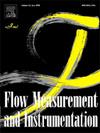CFD-based axial steady-state hydrodynamic study and structural optimization of miniature switching valve
IF 2.3
3区 工程技术
Q2 ENGINEERING, MECHANICAL
引用次数: 0
Abstract
Miniature switching valve internal flow pattern is relatively complex, in the working process of the hydraulic valve cavity often produces low-pressure areas, and eddy currents, as well as leads to spool deformation and displacement of the hydrodynamic force and other phenomena. This affects the stability of the internal flow field of the hydraulic valve, especially when the hydraulic pressure is too large to block the spool movement, inaccurate action is present, or even spool opening and closing failure is jitter out of control. Other phenomena, this paper designs a new type of spool and body combination of miniature switching hydraulic valves, to reduce its axial hydraulic pressure. Firstly, a three-dimensional model of the hydraulic valve with different seat angles was established; secondly, CFD numerical analysis of the model was carried out using FLUENT, and the axial steady state hydrodynamic force was studied by comparing the simulation results. The results show that by simultaneously modifying the geometry of the spool and the valve body, the axial component of the hydrodynamic force can be significantly reduced, thus significantly changing the magnitude of the axial hydrodynamic force of the switching valve, to satisfy the requirement of reducing the driving force required for the work, and to achieve the reduction of power consumption. Finally through the hydraulic valve comprehensive test bench to verify the accuracy of the miniature switching valve, through the research of this paper, can provide a certain reference for the design and research of the switching valve.
基于 CFD 的微型开关阀轴向稳态流体力学研究与结构优化
微型开关阀内部流态相对复杂,在工作过程中液压阀腔内经常会产生低压区和涡流,以及导致阀芯变形和位移的流体动力等现象。这就影响了液压阀内部流场的稳定性,特别是当液压压力过大时,会出现阀芯运动受阻、动作不准确,甚至阀芯启闭失灵抖动失控等现象。针对其他现象,本文设计了一种新型阀芯与阀体组合的微型开关液压阀,以降低其轴向液压压力。首先,建立了不同阀座角度的液压阀三维模型;其次,利用 FLUENT 对模型进行了 CFD 数值分析,并通过比较仿真结果研究了轴向稳态流体动力。结果表明,通过同时修改阀芯和阀体的几何形状,可以显著降低流体动力的轴向分量,从而明显改变开关阀轴向流体动力的大小,满足降低工作所需驱动力的要求,实现降低功耗的目的。最后通过液压阀综合试验台验证了微型开关阀的精度,通过本文的研究,可以为开关阀的设计和研究提供一定的参考。
本文章由计算机程序翻译,如有差异,请以英文原文为准。
求助全文
约1分钟内获得全文
求助全文
来源期刊

Flow Measurement and Instrumentation
工程技术-工程:机械
CiteScore
4.30
自引率
13.60%
发文量
123
审稿时长
6 months
期刊介绍:
Flow Measurement and Instrumentation is dedicated to disseminating the latest research results on all aspects of flow measurement, in both closed conduits and open channels. The design of flow measurement systems involves a wide variety of multidisciplinary activities including modelling the flow sensor, the fluid flow and the sensor/fluid interactions through the use of computation techniques; the development of advanced transducer systems and their associated signal processing and the laboratory and field assessment of the overall system under ideal and disturbed conditions.
FMI is the essential forum for critical information exchange, and contributions are particularly encouraged in the following areas of interest:
Modelling: the application of mathematical and computational modelling to the interaction of fluid dynamics with flowmeters, including flowmeter behaviour, improved flowmeter design and installation problems. Application of CAD/CAE techniques to flowmeter modelling are eligible.
Design and development: the detailed design of the flowmeter head and/or signal processing aspects of novel flowmeters. Emphasis is given to papers identifying new sensor configurations, multisensor flow measurement systems, non-intrusive flow metering techniques and the application of microelectronic techniques in smart or intelligent systems.
Calibration techniques: including descriptions of new or existing calibration facilities and techniques, calibration data from different flowmeter types, and calibration intercomparison data from different laboratories.
Installation effect data: dealing with the effects of non-ideal flow conditions on flowmeters. Papers combining a theoretical understanding of flowmeter behaviour with experimental work are particularly welcome.
 求助内容:
求助内容: 应助结果提醒方式:
应助结果提醒方式:


